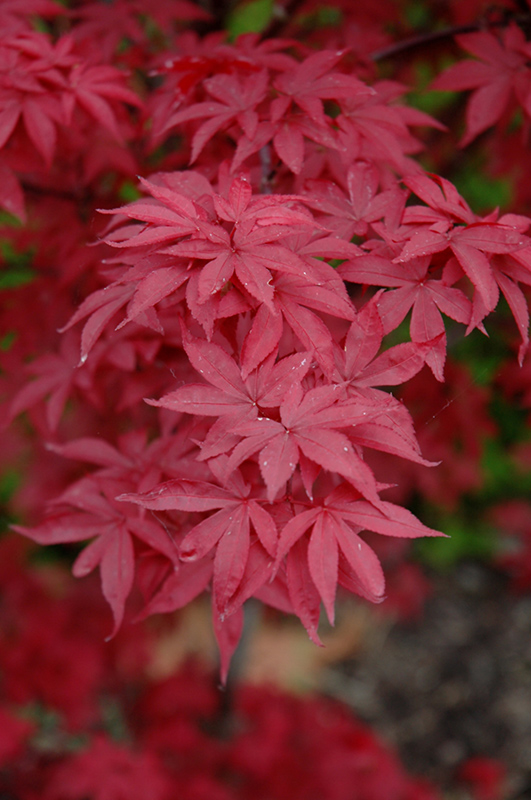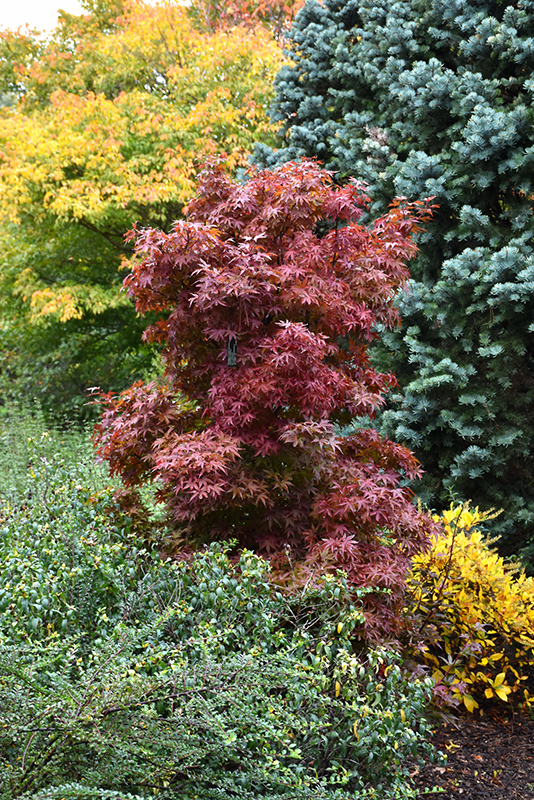Japanese Maple, Twombly's Red Sentinel Acer palmatum 'Twombly's Red Sentinel' Height: 12 feet Spread: 6 feet
Sunlight:
Hardiness Zone: 5b Description: True to its name, this variety maintains a somewhat columnar form, with burgindy to red foliage all season long, ending in a fiery display in fall; dense and narrow upright form. Needs afternoon shade and wind protection. Ornamental Features Japanese Maple, Twombly's Red Sentinel is primarily valued in the landscape or garden for its rigidly columnar form. It has attractive burgundy deciduous foliage which emerges red in spring. The small lobed palmate leaves are highly ornamental and turn an outstanding crimson in the fall. Landscape Attributes Japanese Maple, Twombly's Red Sentinel is a dense deciduous tree with a strong central leader and a narrowly upright and columnar growth habit. Its relatively fine texture sets it apart from other landscape plants with less refined foliage. This is a relatively low maintenance tree, and can be pruned at anytime. It has no significant negative characteristics. Japanese Maple, Twombly's Red Sentinel is recommended for the following landscape applications; Planting & Growing Japanese Maple, Twombly's Red Sentinel will grow to be about 12 feet tall at maturity, with a spread of 6 feet. It tends to be a little leggy, with a typical clearance of 3 feet from the ground, and is suitable for planting under power lines. It grows at a slow rate, and under ideal conditions can be expected to live for 60 years or more. This tree should be grown in a location with partial shade and which is shaded from the hot afternoon sun. It prefers to grow in average to moist conditions, and shouldn't be allowed to dry out. This plant should be periodically fertilized throughout the active growing season with a specially-formulated acidic fertilizer. It is not particular as to soil pH, but grows best in rich soils. It is somewhat tolerant of urban pollution, and will benefit from being planted in a relatively sheltered location. Consider applying a thick mulch around the root zone in winter to protect it in exposed locations or colder microclimates. This is a selected variety of a species not originally from North America. Special Attributes Japanese maples generally produce a few to no seeds called samaras, which are commonly referred to as helicopters 1/2 to 3/4 of an inch long, and approximately 1/4 inch wide. Growing in pairs, they start green then mature red during the growing season![]()
![]()
![]()
![]()
![]()
![]()
![]()
![]()
![]()
![]()
![]()
![]()


